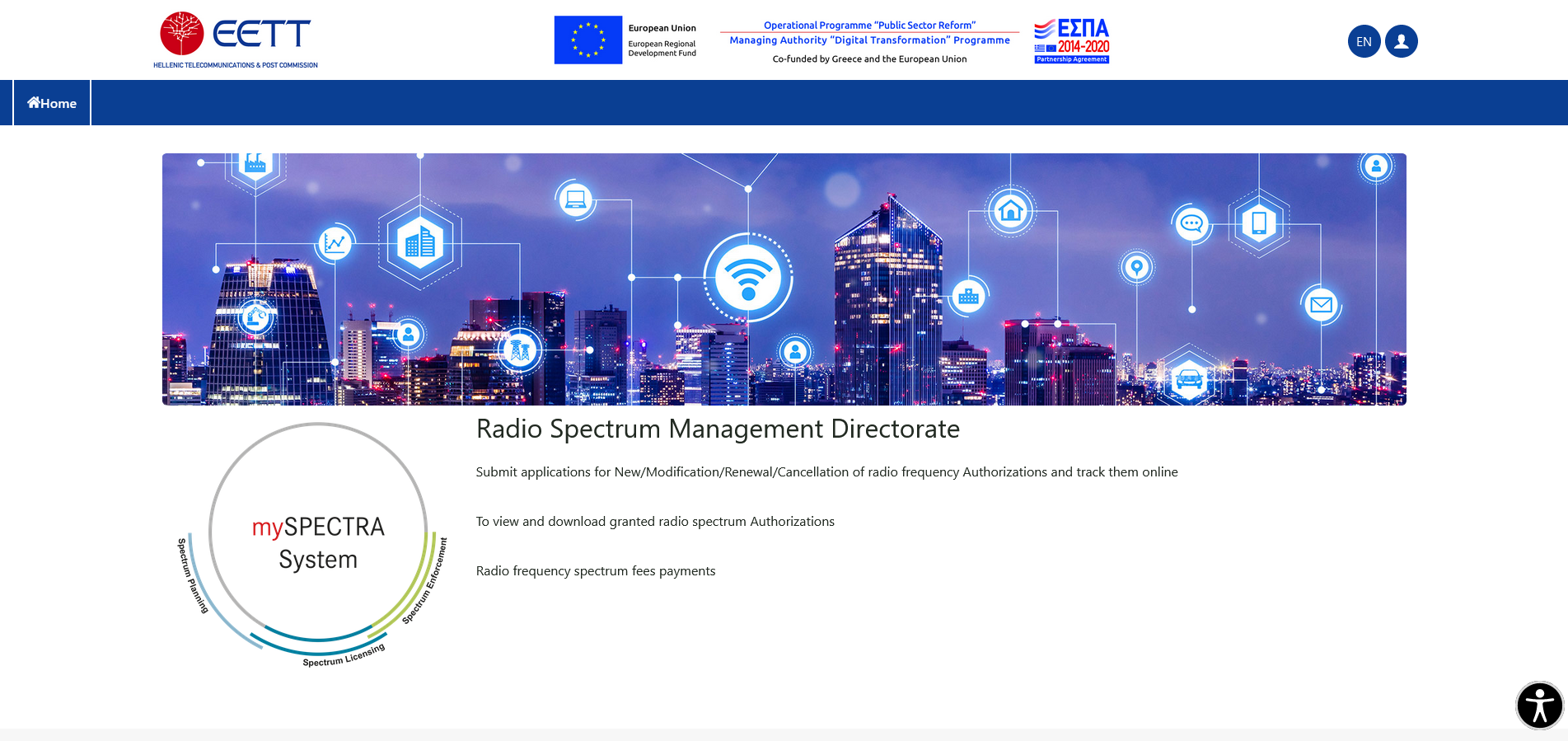1. What is an antenna?
An antenna is used by a transmitter to send electromagnetic waves which will be collected by another antenna, that of the receiver, with the two points communicating through coordination. Antennas are necessary to transmit signals between two points, such as in the case of mobile telephony, between our mobile phone and the base station, and in the case of television signal, between the transmitter antenna (which transmits the television signal) and the receiver antenna installed in our home.
In technological terms, an antenna is a passive transducer. While transmitting, it converts the electromagnetic energy traveling down a wire into an electromagnetic wave in space and the opposite happens while receiving. Every object that is a good conductor of electricity and has a natural length proportional to the wavelength of an electromagnetic signal has this capability. For this reason, the majority of antennas is made from metal.
2. How can I find out if an installed antenna is licensed?
EETT has established the Information Portal for Antenna Constructions, keraies.eett.gr, through which you may find information about antenna constructions that have been licensed or operate legally, in accordance with current legislation. On keraies.eett.gr, you can search for antenna constructions located in a municipality or an exact address or a geographical area though the map.
In the interests of transparency, as soon as an antenna construction is granted a license, EETT makes its full file immediately available on keraies.eett.gr, disclosing all studies, approvals and licenses granted. Furthermore, through a relevant link on the electronic record of every antenna construction, you may search for available measurements for licensed antenna constructions conducted by the Greek Atomic Energy Commission (EEAE).
The Information Portal does not include:
- Antenna constructions which, in accordance with current legislation, are explicitly exempted from licensing or submitting a declaration to EETT, such as antenna constructions for receiving television signal for broadcast programs intended for the general public, antennas of radio amateurs and those belonging to the Civil Aviation Authority (CAA), security forces and ministries (see Questions 5).
- Antenna constructions which are found to have been illegally installed, following complaints or ex officio inspections by EETT.
3. What is the procedure for the licensing of an antenna?
For installing and operating a land-based antenna construction or modifying an existing construction, the following requirements apply (Law 4635/2019, Article 21):
- A license issued by EETT.
- An approval of building constructions for an antenna.
- An inspection report prepared by a building inspector, which confirms that the building constructions for the antenna have been implemented in accordance with the above-mentioned approval of building constructions.
The main laws that regulate the licensing of antenna constructions are Law 4635/2019 and Law 4070/2012.
Furthermore, the antenna must comply with specific limits to ensure the safe exposure of the public to electromagnetic radiation (Joint Ministerial Decision No. 53571/3839/2000).
In accordance with Law 4635/2019, a license for an antenna construction granted by EETT requires:
- An approval by the Hellenic Civil Aviation Authority (CAA) for the safety of air navigation.
- A study prepared and submitted to the Greek Atomic Energy Commission (EEAE), confirming that electromagnetic radiation levels do not exceed 70% of the safety limits laid down in Council Recommendation 1999/519/EC at no point in the vicinity of the antenna which is accessible by the public. The study should be accompanied by site and architectural plans, and a positive opinion by EEAE is a prerequisite for its licensing.
- An approval of environmental conditions, which is issued by competent Regional authorities upon submission of an Environmental Impact Study (EIS), or a declaration that the construction is subject to Standard Environmental Commitments (SEC), where applicable.
- An approval of granting of rights to use radio frequencies or proof of legal use of radio frequencies for transmission and reception. Proof of legal use means any relevant decisions by EETT or subsumption under the rule of exemption from this obligation.
- A Solemn Declaration about assuming the obligation to submit all appropriate information and studies required for the approval of building constructions for an antenna.
Licensing by EETT takes place almost entirely though the Electronic Application Submission System (SILYA) for antenna constructions where providers submit their applications and a file with all required documents (Law 4635/2019). Within 3 months from the electronic submission of a complete file, competent authorities are required to assess matters within their competence and update SILYA on the approval or rejection of the application.
EETT will issue a license for an antenna construction within one month from the issuance of all above-mentioned administrative acts of approval.
Following the issuance of the license by EETT, the owner must submit an application to e-Permits, the Electronic Permit Issuance System of the Technical Chamber of Greece (TCG) for the approval of building constructions for an antenna, in accordance with Law 4495/2017. Upon receiving the approval, the owner can install the antenna construction. Afterwards, the owner must submit a request to e-Permits to arrange an on-site inspection by a building inspector in order for them to assess the proper implementation of building constructions, based on the approval, and prepare the relevant inspection report. Where no infringements are found, the inspection report will be drawn up within 24 hours. At the same time, e-Permits will be updated and a certificate for the connection of the antenna construction to utility networks will be automatically issued.
The owner of an antenna construction is required to maintain a prominently displayed sign with indelible lettering, which states the corporate name and the unique identification number of the antenna construction to enable its search on keraies.eett.gr.
4. What is the Electronic Application Submission System for antenna constructions?
The Electronic Application Submission System (SILYA) for antenna constructions is a web-based application developed by EETT through which the licensing procedure for antenna constructions takes place. The companies submit their applications electronically, and competent agencies examine them via online access. In this way, the licensing procedure is improved and accelerated and at the same time, services of electronic governance are introduced in the Greek public administration.
Upon completion of the licensing/declaration submission procedure for an antenna construction on SILYA, the relevant decision and the contents of the electronic file are automatically available to the public through the Information Portal keraies.eett.gr (see Question 2) .
5. Which antennas are exempted from licensing?
Exempted from the obligation of licensing (Law 4635/2019, Article 21) are the antenna constructions (Law 4635/2019, Article 29) of:
- Armed Forces, Security Forces, National Intelligence Service (NIS), Hellenic Civil Aviation Authority (CAA), Hellenic National Meteorological Service (HNMS), Hellenic Coast Guard, National Center of Emergency Care (EKAB), EETT’s National Spectrum Management and Monitoring System (NSMMS) as well as the radio communications station of the Ministry of Digital Governance covering its own needs.
- Ministries, embassies and diplomatic missions on condition that:
- They do not negatively affect the safety of air navigation.
- They have been assigned radio frequencies for transmission and/or reception or have received relevant approval.
- A declaration has been previously submitted through SILYA, stating the technical specifications of the antenna system.
- Licenced radio amateurs provided that:
- They do not negatively affect the safety of air navigation.
- They use frequencies which have been allocated based on the National Regulation on the Allocation of Radio Frequency Bands (NRFBA) to serve radio amateur purposes.
- A declaration has been previously submitted through SILYA, stating the technical specifications of the antenna system.
- Base stations of special radio networks on condition that they meet the following requirements:
- They have a valid operating license, which includes a description of the antenna constructions installed in the building as stated in the license.
- The highest point of the antenna construction does not exceed 6 meters from its base.
- The antenna is positioned at least 4 meters from the site’s border outline in a horizontal projection.
- CB base stations, where applicable, provided that they meet the following requirements:
- For stations who have been granted licenses of installation and operation which are still valid.
- The highest point of the antenna construction does not exceed 6 meters from its base.
- Small antenna constructions intended for use inside buildings.
- Small antenna constructions intended for use of local data transfer, such as on the premises of industrial facilities, stadiums and building complexes.
- Exclusively for receiving programs intended for the general public (radio/television programs).
- They are of low electromagnetic environmental impact (Antenna Construction Facilities of Low Electromagnetic Environmental Impact–ACFLI). These antenna constructions can be installed without prior environmental licensing, approval or permit by competent urban planning authorities. A key condition is that they comply with laws on protected areas, airports and airport facilities, traditional settlements, archaeological sites, historical sites and immovable monuments. The owner should submit an electronic declaration prior to installing and operating ACFLI.
6. If I am unable to find an antenna on keraies.eett.gr, who should I contact?
If your search on keraies.eett.gr does not yield any results, it is likely that the antenna construction you are looking for does not require a license/submission of declaration (see Question 5).
In any case, you can submit a complaint to EETT by filling out the relevant complaint form. EETT will examine the complaint, carrying out an on-site inspection, and will inform you about the results.
7. In case an antenna is not licensed, what steps will EETT take?
First, EETT will carry out an on-site inspection and if it finds that the antenna construction has been illegally installed, it will impose administrative penalties.
More specifically, EETT will impose administrative penalties on the owner of a construction that:
- Is not granted a license or certificate of completeness.
- Is granted a license or certificate of completeness, but deviations have been found during an on-site inspection.
- Is granted a license or certificate of completeness that has been issued based on false/inaccurate/falsified information.
Fines constitute government revenue. The decision on imposing penalties will be notified to the competent:
- Public prosecutor’s office, within the framework of criminal proceedings, to impose criminal sanctions as provided for.
- Urban Planning Department, which will order the demolition of the illegal antenna construction. It is noted that the Urban Planning Department may order the demolition of illegal antennas or antennas that are not in operation on its own initiative.
8. Can an antenna continue to operate when an injunction has been filed?
Where there is a court ruling on an injunction or a provisional order for the suspension of the operating license, the antenna in question must not remain in operation. EETT will carry out inspections in these cases and where non-compliance with court rulings is found, the owner will be called to a hearing.
9. Which authority is responsible for safeguarding the public against the operation of antennas?
Prior to installation, owners of antenna constructions are required to submit a study on electromagnetic radiation to the Greek Atomic Energy Commission (EEAE), which is responsible for any issues relating to measures to protect the public against electromagnetic radiation. EEAE will issue an opinion about the study and will conduct on-site inspections and measurements of emissions by antenna constructions.
A necessary condition for the installation and operation of an antenna construction is compliance with the Joint Ministerial Decision No. 53571/3839/2000. Basic restrictions and reference levels are provided for, and the limits that must apply in spaces in the vicinity of antenna constructions are laid down to ensure the public’s safe exposure to electromagnetic radiation emitted by antenna constructions.
It is pointed out that the limits set by legislation in Greece are reduced by 30% compared to the limits laid down in the relevant Council Recommendation (L 199, 1999/519/EC). Especially where an antenna construction is installed in a distance up to 300 meters from the perimeter of building facilities housing nurseries, nursing homes and hospitals, the limits for the safe exposure of the public are stricter and reduced by 40% compared to the values set in the above-mentioned Recommendation.
10. How is it ensured that the limits of safe exposure to electromagnetic radiation are applied?
The Greek Atomic Energy Commission (EEAE) monitors compliance with the limits to ensure safe exposure of the public to electromagnetic radiation. In particular, the EEAE is required (Law 4635/2019, Article 35, paragraph 4) to monitor the compliance of antenna constructions requiring a license with these limits as follows:
- On its own initiative and by random selection on an annual basis regarding at least 20% of antennas licensed by EETT which operate within city plan.
- Upon a request by EETT or any other natural or legal person who has a vested interest within 20 working days (from the date of submission of the relevant request). In this case, EEAE will notify the applicant and the owner of the antenna construction immediately of the inspection results.
Furthermore, EEAE publishes in detail and in a chronological order on its website all the results of the measurements it carries out for every antenna construction in Greece.
It is pointed out that all measurements conducted by EEAE regarding antenna constructions are available on keraies.eett.gr.






